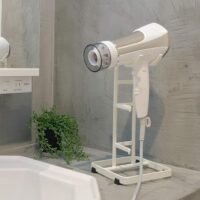Loopというプロジェクト進行のためのアプリに関するアップデートで、パブリックプレビュー期間を抜けて正式実装されるので10月末~12月末の間から、テナントのデータ領域を食うようになる、という内容です。
パブリックプレビュー時では、テナントに割り当てられているデータ容量を消費しない代わりに各ワークスペースの容量は5GBまでという制限がありましたが、今後は各ワークスペースの制限が1TBまでになると共に、テナントのデータ容量を消費するようになります。
What you need to do to prepare:
以下は、ユーザーにLoopを使わせなくするためのアドミン設定及びSPO PowershellでLoopがどれだけの容量を食っているかをチェックする方法が紹介されています。
原文
メッセージの概要
Loop is a new app that enables your teams to think, plan, and create together like never before.
During the Loop app Public Preview, Loop workspaces were not counted towards your tenant’s storage quota. As the Loop app exits Public Preview, workspaces will start counting towards your tenant’s storage quota.
When this will happen:
Loop workspaces will start being counted towards your tenant’s SharePoint storage quota between late October and late November 2023.
How this will affect your organization:
Users in your organization may have created Loop workspaces during the Loop app Public Preview in 2023. During the Public Preview, each workspace was capped at a 5GB maximum size. Users could create any number of workspaces. These workspaces were not counted towards your tenant’s storage quota.
When this change goes into effect, new workspaces will instead have a 1TB maximum size. They will count towards your tenant’s SharePoint storage quota.
What you need to do to prepare:
You don’t need to do anything to enable this change. If you want to prevent more Loop workspaces from being created in your tenant, you have the option to proactively disable Loop workspaces in your organization using an admin setting. We recommend you also verify that the Loop admin setting is in the state you desire (i.e. “Enabled”, granting access to Loop workspaces, or “Disabled”, blocking access).
How you can see storage consumption of Loop workspaces:
Admins can connect to SPO PowerShell to enumerate all Loop workspaces and view storage used by individual Loop workspace by following these steps.
1. Run Get-SPOApplication
This command will return the Owning Application Id and Application Name associated with Loop.
2. Run Get-SPOContainer -OwningApplicationId <OwningApplicationID> | FT
- Input OwningApplicationID for the Loop app obtained in Step #1.
This command will return all the Loop workspaces created in the tenant.
3. Run Get-SPOContainer -OwningApplicationId <OwningApplicationID> -Identity <ContainerID>
- Input OwningApplicationID for the Loop app obtained in Step #1
- Input ContainerID of the workspace obtained in Step #2
This command will return StorageUsedInBytes along with other details of the workspace.













